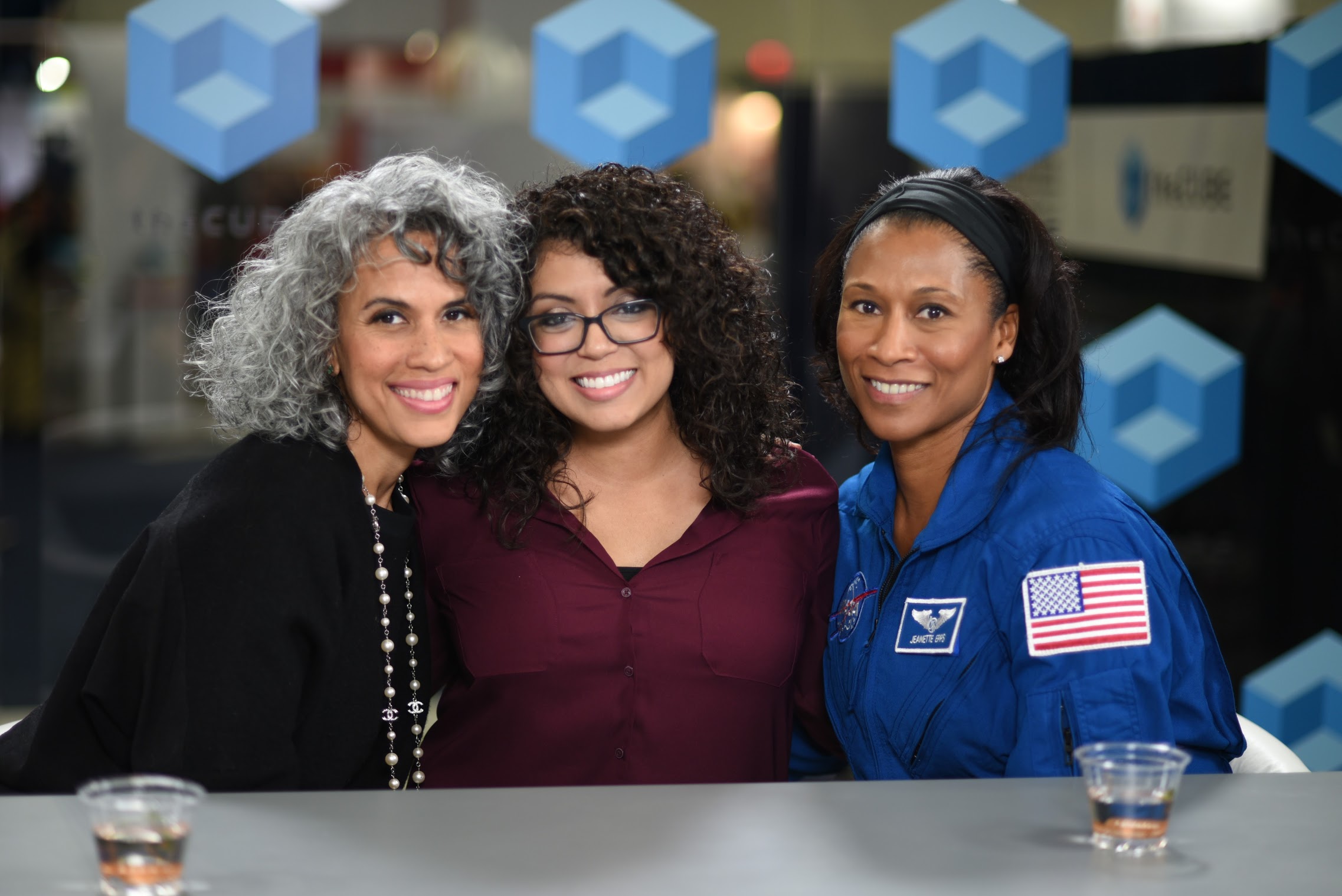 WOMEN IN TECH
WOMEN IN TECH
 WOMEN IN TECH
WOMEN IN TECH
 WOMEN IN TECH
WOMEN IN TECH
Many companies have begin to address the issue of women in technology, but what about women in space? Is there diversity at NASA, and how is it recruiting talent?
Mimi Valdes (@MimiValdes), executive producer at Hidden Figures; Dr. Jeanette Epps, astronaut at NASA’s Johnson Space Center; and Christina Deoja, electrical engineer at NASA, addressed these and other important issues regarding diversity in STEM. Valdes, Epps and Deoja talked with Rebecca Knight (@knightrm), host of theCUBE, from the SiliconANGLE Media team, during the Grace Hopper Celebration of Women in Computing about women in NASA and diversity in STEM.
All three of these women are encouraging girls across the globe to look into STEM (Science Technology Engineering and Mathematics) careers. As NASA makes leaps and bounds in space travel, Epps hopes that the national push to put humans on Mars will “inspire a new generation to do great things.”
Valdes is working on the movie Hidden Figures, which tells the story of three women who were vital to putting man on the moon. She hopes the film will encourage more girls to look for careers in STEM and even work for NASA.
As an electrical engineer for NASA, Deoja directly works on the power systems for rockets in various space programs. She’s been with NASA for over nine years and hopes to be an inspiration to girls everywhere. All three women agree that working for NASA, whether directly or indirectly, is important for visibility.
To be successful in any career, “it’s important to see positive images and role models,” said Epps. The more STEM careers that are made visible “the more beneficial for humanity,” said Valdes. These women are hoping to be positive role models and examples for girls to follow and hopefully emulate.
Although the number of women in STEM is low in comparison to men, it is on rise, according to Epps. NASA and other organizations in STEM are actively seeking more women and recruiting the brightest minds, she added.
One important bit of advice the trio gave was to always move forward and never be afraid to fail. Failure doesn’t mean stop trying and can in fact be “an opportunity to learn,” said Valdes. With every failure comes a learning opportunity, both for the individual and the organization they’re a part of.
Watch the complete video interview below, and be sure to check out more of SiliconANGLE and theCUBE’s coverage of the Anita Borg Institute’s Grace Hopper Celebration of Women in Computing.
THANK YOU